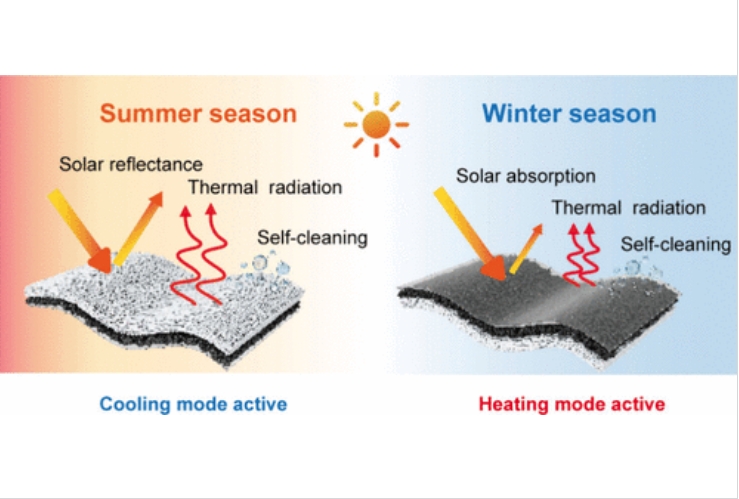Li Yuan,Siyuan Jia,Sujin Shao,Hafiz M. Asfahan,Xiuqiang Li*
Nano Letters(IF:9.6),Published May 2, 2025
Abstract
Textiles capable of achieving both solar heating and radiative cooling play a pivotal role in outdoor thermal management. Despite significant advancements, further improvements are necessary to enhance the optical performance and versatility. In this study, we developed a Janus textile comprising a porous poly(vinylidene fluoride-co-hexafluoropropylene) [P(VdF-HFP)HP] cooling layer (96.4% solar reflectance and 95.3% mid-infrared emissivity) and a Cu-nanoparticle-based heating layer (95.5% solar absorption and 89.1% mid-infrared reflectance). After 30 washing cycles, its performance remains stable. Field tests demonstrate impressive temperature differentials of +41.1 °C for heating and −4.5 °C for cooling relative to ambient conditions, thereby extending the thermal regulation range by 26.6 °C compared to conventional cotton textiles. Additionally, nanostructured surfaces impart hydrophobicity, oleophobicity, and fouling resistance. This design offers a sustainable solution with superior thermal management, stability, and self-cleaning ability for outdoor protection.

DOI:https://doi.org/10.1021/acs.nanolett.5c01738
--校内链接--
--校外链接--

微信公众号